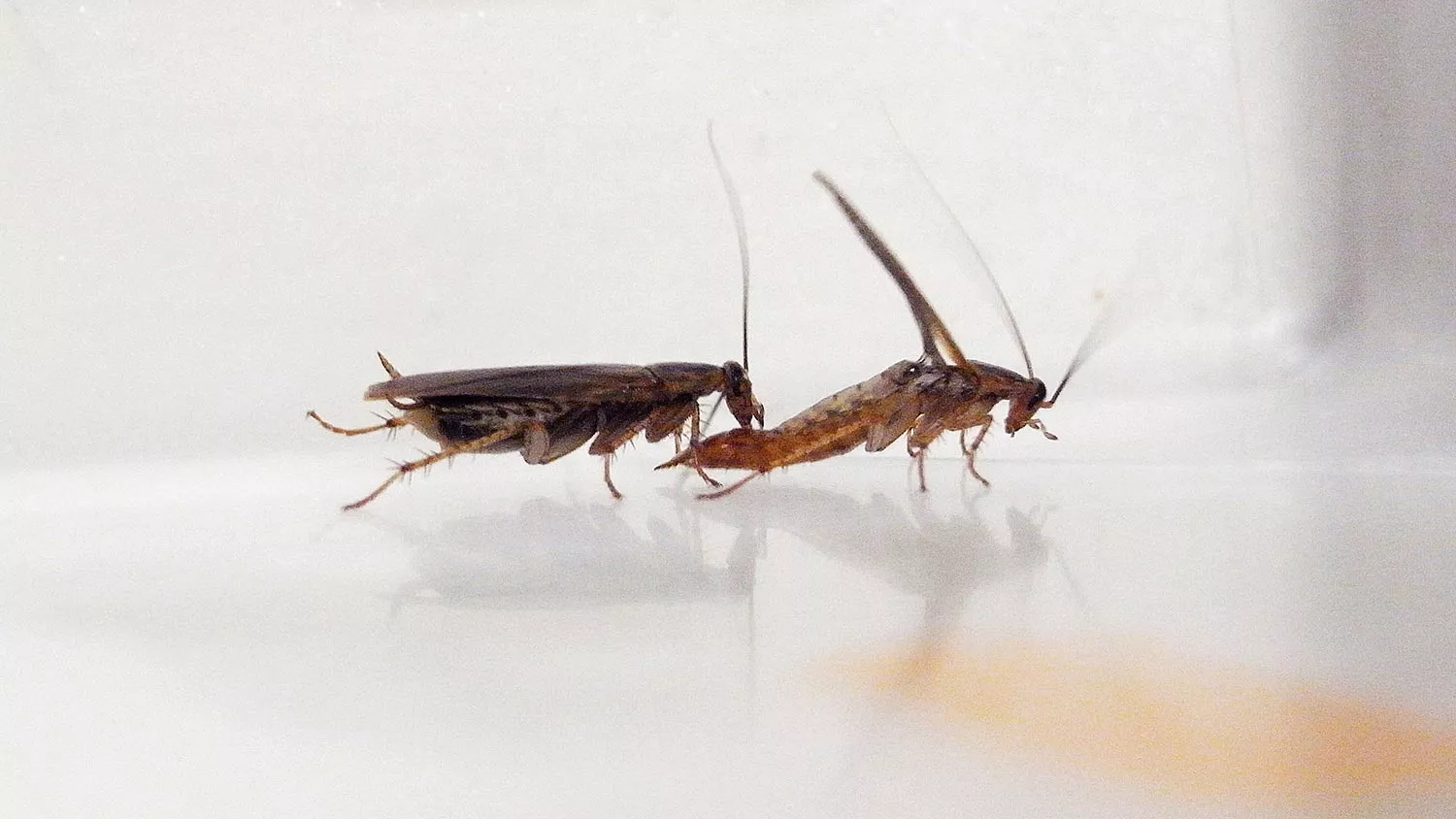New research from North Carolina State University shows the behavioral mechanism behind a sweet cockroach mating ritual, which changes painfully and leads to the rejection of male cockroaches. The male German cockroach (Blattella germanica) provides the female with a "gift" before mating, that is, the body secretion combined with sugar and fat to attract and maintain the female's attention, so as to start mating.

"This is a common mating behavior among insects and some other animals: males give delicious or valuable gifts to females - it's like Valentine's day, but it's the same every day," said Coby Schal, a distinguished professor of Entomology from Blanton J. Whitmire, North Carolina, and co-author of the paper
However, the study shows that females who are averse to monosaccharide glucose get an unpleasant surprise when mixing their saliva with male secretions - saliva degrades sweets with complex sugars into glucose, which becomes a bitter medicine to end the courtship ceremony. At this time, females rush away without mating.
Ayako Wada katsumata, lead researcher at North Carolina State University and co-author of the paper, said: "we see that glucose averse female German cockroaches reject this engagement gift -- and the opportunity to mate -- and want to learn more about the mechanism behind it."
Generally speaking, cockroaches like sugar. But some have developed an aversion to glucose; Wada katsumata published a paper in 2013 to explain the neural mechanism behind this aversion of German cockroaches. This behavior may be more obvious due to the presence of monosaccharides in cockroach diets placed inside the family. In a 2021 study, Wada katsumata and Schal pointed out that cockroach saliva converts complex sugars into glucose.
"Male cockroach secretions have different types of sugar -- in this case, maltose and maltotriose -- and some fat," Wada katsumata said. In addition, she also pointed out that maltose is relatively easy to convert into glucose, while maltotriose is more complex and takes longer to decompose into glucose.
"Cockroaches have chemicals in their saliva that break down sugars. When females feed their gifts, maltose is quickly converted to glucose, and glucose averse females feel bitter and stop feeding, which also ends mating opportunities," Schal explained
The mating process of cockroaches is very interesting, but it may be strange to amphibians. Males approach females, lift their wings and release chemicals through the tergal glands on their backs. Females attracted by secretions climb onto the male's back and feed on secretions. When she eats, the male stretches his abdomen under the female, grabs her with a slender hooked penis, and then enters the mating position. This courtship process takes only a few seconds; It is during this time that complex sugars in saliva are quickly chemically converted into monosaccharides, which may kill the mood of glucose averse females. However, if successful, cockroaches will mate back-to-back for up to 90 minutes, and the male will use the second penis to transfer the sperm package to the female.
In this study, researchers conducted various experiments to determine how glucose aversion affects cockroach courtship. They found that glucose averse females interrupted eating more frequently due to aversion, especially when eating from wild-type males, males who were not averse to glucose. Glucose averse males tend to have higher levels of maltotriose in their secretions, which are less easily converted to glucose, thus providing these males with additional time to start mating.
In addition, the researchers changed the quality of male secretions - replacing glucose and maltose secretions with fructose. Females who don't like glucose like fructose and eat fructose for longer, which makes the mating process more successful.
Schal said: "This study directly shows that the quality of secretions affects female behavior and mating success. There is a trade-off between sexual selection and natural selection. Think of deer as an example. Male deer have horns, not for natural selection - horns actually put male deer at risk of being attacked by predators and hunters, but for sexual selection to attract female deer and serve as a useful weapon in competition with other male deer. Similarly , the tergal gland of cockroaches also evolved to attract females in the context of sexual selection. "
"Wild type females accept sugary secretions. Females who don't like glucose don't accept wild-type secretions because they are easily converted to glucose. Males can change the composition of secretions - perhaps produce more maltotriose, which takes longer to convert to glucose - or try to mate faster," Wada katsumata said "In short, the glucose aversion trait evolved under natural selection, but under sexual selection, it is causing males to modify their sexual secretion and behavior."
The 2013 study informed bait manufacturers not to use glucose in bait. The 2021 study extended this recommendation to all sugars containing glucose. Bait made of glucose, sucrose, maltose and other sugars will be ignored by cockroaches who hate glucose. As more glucose averse cockroaches survive, this trait will be passed on in greater numbers.
"We've been fighting evolution against cockroaches. In urban and human environments, the pace of evolution can be greatly accelerated because the selectivity imposed on insects, especially at home, is so strong," Schal said